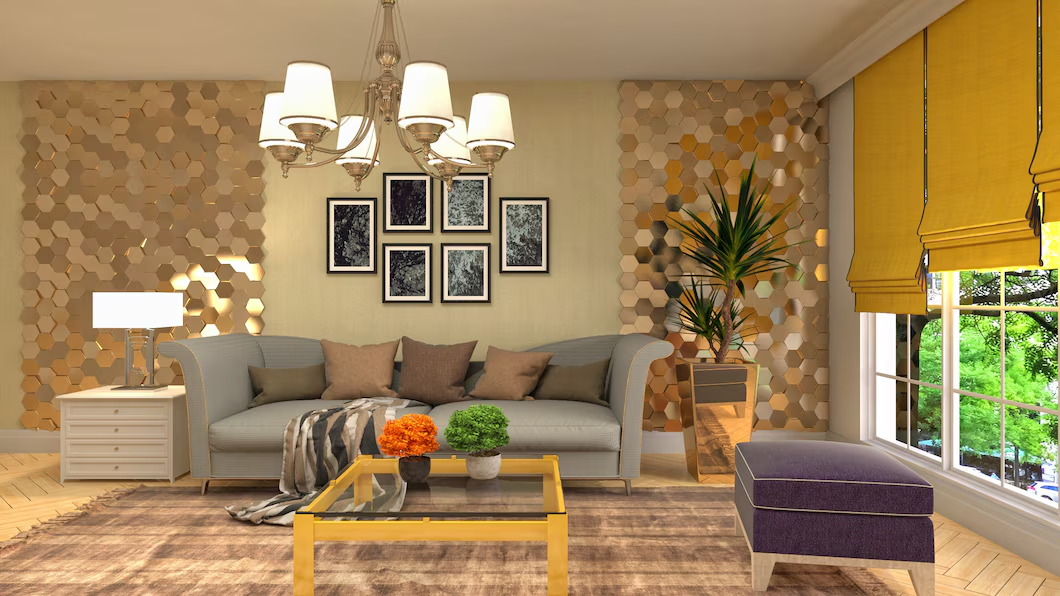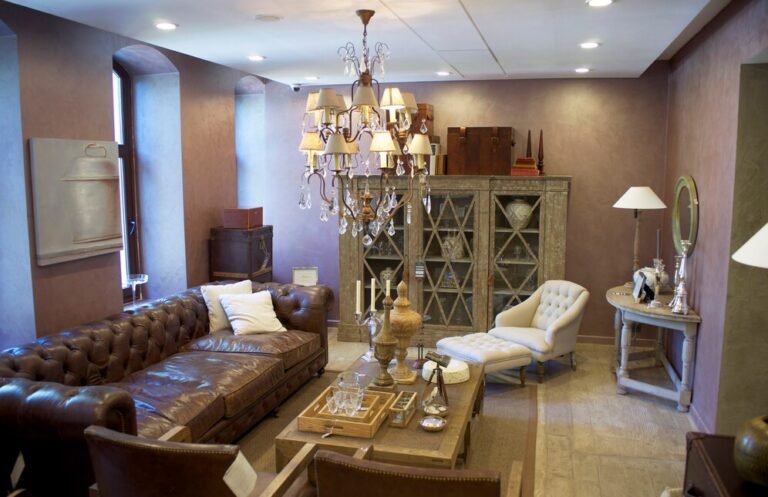Ever wondered how you can turn your middle-class abode into a sanctuary of style without the hefty price tag? Interior design for middle-class homes isn’t just about aesthetics; it’s about creating a space that reflects your personality and enhances your daily life. Whether you’re dreaming of a high-end look or want to add a touch of sustainability, knowing the tricks of the trade can make all the difference. This post will guide you through current trends, budget-friendly strategies, and DIY tips to elevate your living space. Let’s explore how you can make your home the envy of your neighborhood with middleclasshomes.net interior design wisdom.
Why Interior Design Matters for Middle-Class Homes
If you think interior design is reserved for the wealthy, think again! For middle-class families, a well-designed home means more than just good looks. It’s about comfort, functionality, and creating an environment that you love coming home to. But why is it so important?
First off, your home is your sanctuary. It’s where you unwind after a long day, entertain guests, and spend quality time with family. A thoughtfully designed space can make all these experiences more enjoyable. Plus, a great interior design can increase your property’s value—an important factor for many middle-class homeowners.
Lastly, there’s the aspect of personal satisfaction. Nothing beats the feeling of living in a place that truly feels like home. With the right design elements, you can have a space that speaks to your soul. Ready to start your design adventure? Keep reading to discover how you can make it happen.
What’s Trending in Middle-Class Home Interior Design?
Trends come and go, but knowing what’s popular can give you a fresh perspective on your home’s potential. Here’s what’s hot in middle-class home design right now.
One trend that’s gaining momentum is the mix of modern and vintage elements. Think sleek lines paired with classic furniture pieces. This creates a unique look that’s both timeless and contemporary. It’s a great way to add character to your home without going overboard.
Next up, we have the use of bold colors and patterns. Gone are the days of plain, neutral walls. Today’s homes are all about making a statement. Whether it’s a vibrant accent wall or patterned throw pillows, a splash of color can transform any room.
Finally, let’s talk about open spaces. More and more homeowners are knocking down walls to create open-concept living areas. This not only makes your home feel larger but also encourages more interaction among family members. It’s all about creating a space that’s inviting and functional.
How to Achieve High-End Looks on a Middle-Class Budget
Dreaming of a home that looks like it belongs in a magazine? You don’t need a millionaire’s budget to make it happen. Here are some strategies to achieve a high-end look without breaking the bank.
Start with the basics—paint and lighting. A fresh coat of paint can do wonders for any room. Choose colors that complement your furniture and make the space feel cozy. Lighting is another element that can dramatically change the look of your home. Invest in good lighting fixtures, and your space will instantly feel more luxurious.
Next, focus on textures and materials. High-end designs often incorporate a variety of textures to add depth and interest. Consider mixing materials like wood, metal, and fabric to create a sophisticated look. Don’t be afraid to layer rugs or add throw blankets for extra comfort.
Lastly, pay attention to details. Often, it’s the little things that make a big difference. Swap out old hardware for new, stylish options. Add artwork or decorative pieces that reflect your personality. By focusing on details, you can elevate your home’s design without spending a fortune.
Sustainable and Eco-Friendly Choices for Your Home
In today’s world, sustainability isn’t just a buzzword—it’s a way of life. If you’re looking to create an eco-friendly home, you’re in luck. There are plenty of ways to make your space more sustainable without sacrificing style.
Start by choosing sustainable materials. Opt for furniture made from reclaimed wood or recycled materials. Not only are they better for the environment, but they also add a unique touch to your home. Bamboo is another great option, as it’s both durable and eco-friendly.
Consider energy-efficient appliances and lighting. They might cost more upfront, but they’ll save you money in the long run. Plus, you’ll be doing your part to reduce your carbon footprint. LED bulbs, energy-efficient refrigerators, and smart thermostats are just a few options to consider.
Finally, incorporate plants into your design. Not only do they improve air quality, but they also add a touch of nature to your home. Choose low-maintenance plants like succulents or snake plants. They’re easy to care for and will thrive in any environment.

Real-Life Transformations of Middle-Class Homes
Nothing inspires more than seeing real-life examples of transformation. Here are a few case studies of middle-class homes that have been revitalized through thoughtful design.
Take Sarah’s living room, for example. By simply rearranging furniture and adding a few accent pieces, she turned a drab space into a cozy retreat. A new area rug and a couple of throw pillows made all the difference.
Or consider Mike’s kitchen makeover. With a limited budget, he painted his cabinets and installed a stylish backsplash. The result? A modern, functional kitchen that looks straight out of a design magazine.
Lastly, let’s look at Emma’s bedroom transformation. She added a fresh coat of paint, new curtains, and a statement headboard. Her once plain bedroom is now a chic sanctuary. These examples show that with creativity and effort, you can transform your home without spending a fortune.
DIY Tips for Home Renovations
Ready to roll up your sleeves and tackle a DIY project? Here are some tips for successful home renovations that will help personalize your space.
First, plan ahead. Before you start ripping out walls or buying new furniture, make a plan. Know what you want to achieve and create a budget. This will help keep you on track and prevent overspending.
Next, start small. You don’t need to renovate your entire home in one go. Focus on one room or project at a time. This makes the process more manageable and less overwhelming. Plus, you’ll have the satisfaction of seeing progress quickly.
Finally, don’t be afraid to ask for help. Whether it’s from a friend or a professional, getting a second opinion can be invaluable. They can offer advice, point out potential issues, and help you avoid costly mistakes. Remember, two heads are better than one!
Enhancing Everyday Living Through Design
Interior design isn’t just about making your home look good—it’s about enhancing your quality of life. Here’s how design can improve everyday living for middle-class families.
A well-designed home can boost your mood and reduce stress. When your space is organized and aesthetically pleasing, it promotes a sense of calm and well-being. It’s the perfect environment to relax and recharge after a long day.
Design can also improve functionality. By optimizing your space, you can make everyday tasks easier and more efficient. Whether it’s a well-organized kitchen or a cozy reading nook, thoughtful design can make your life more enjoyable.
Lastly, interior design can foster family connections. Open spaces and comfortable seating encourage interaction and togetherness. By creating a welcoming atmosphere, your home becomes a place where family and friends want to gather.
Designing Your Dream Space on a Budget
Creating your dream home doesn’t have to be a distant fantasy. With the right approach, you can design a space that’s both beautiful and affordable.
Start by setting a budget. Knowing how much you can spend will help guide your decisions. Prioritize your spending on items that will have the biggest impact, like furniture or lighting.
Get creative with your resources. Thrift stores, garage sales, and online marketplaces can be goldmines for unique and affordable decor. Don’t be afraid to mix and match to create a look that’s uniquely yours.
Lastly, remember that patience is key. Rome wasn’t built in a day, and neither is your dream home. Take your time and enjoy the process. With each project, you’ll be one step closer to the home you’ve always wanted.
Bringing It All Together
Interior design is more than just a visual concept—it’s a way to enhance your everyday life. Whether you’re following trends, working within a budget, or making sustainable choices, your home should reflect who you are.
